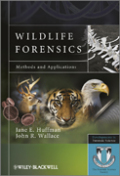
Wildlife Forensics: Methods and Applications provides an accessible and practical approach to the key areas involved in this developing subject. The book contains numerous global case studies throughout the text that take the reader from the field, to the lab analysis to the court room, giving a complete insight into the path of forensic evidence and demonstrating how current techniquescan be applied to wildlife forensics. With numerous global examples of various types of wildlife crimes, this is a useful reference for the application offorensic techniques to the field of wildlife crime. It covers a number of different areas in forensics, entomology, hair identification, use of DNA for individualization and species identification. The book also includes reference material pertaining to the field of wildlife forensics and demonstrates how other areas of forensic science integrate to support wildlife forensic investigations. The book contains approaches that wildlife forensic investigators and laboratory technicians can employ in investigations and effectively illustrates various methods through case studies. It provides the direction and practical advice required by legal and police professionals seeking to gain the evidence needed to prosecute wildlife crimes. The book brings together in one text various aspects of wildlife forensics, toxicology, entomology, serology hair identification, and DNA analysis. Case studies discussed in the book take the reader from the field, to the lab analysis to the court room and provide a completeoverview of handling a case. This title is an invaluable reference providing investigators, laboratory technicians and students in forensic science/conservation biology classes with practical guidance and best methods for criminal investigations applied to wildlife crime.
- ISBN: 978-0-470-66258-8
- Editorial: John Wiley & Sons
- Encuadernacion: Cartoné
- Páginas: 384
- Fecha Publicación: 30/12/2011
- Nº Volúmenes: 1
- Idioma: Inglés
